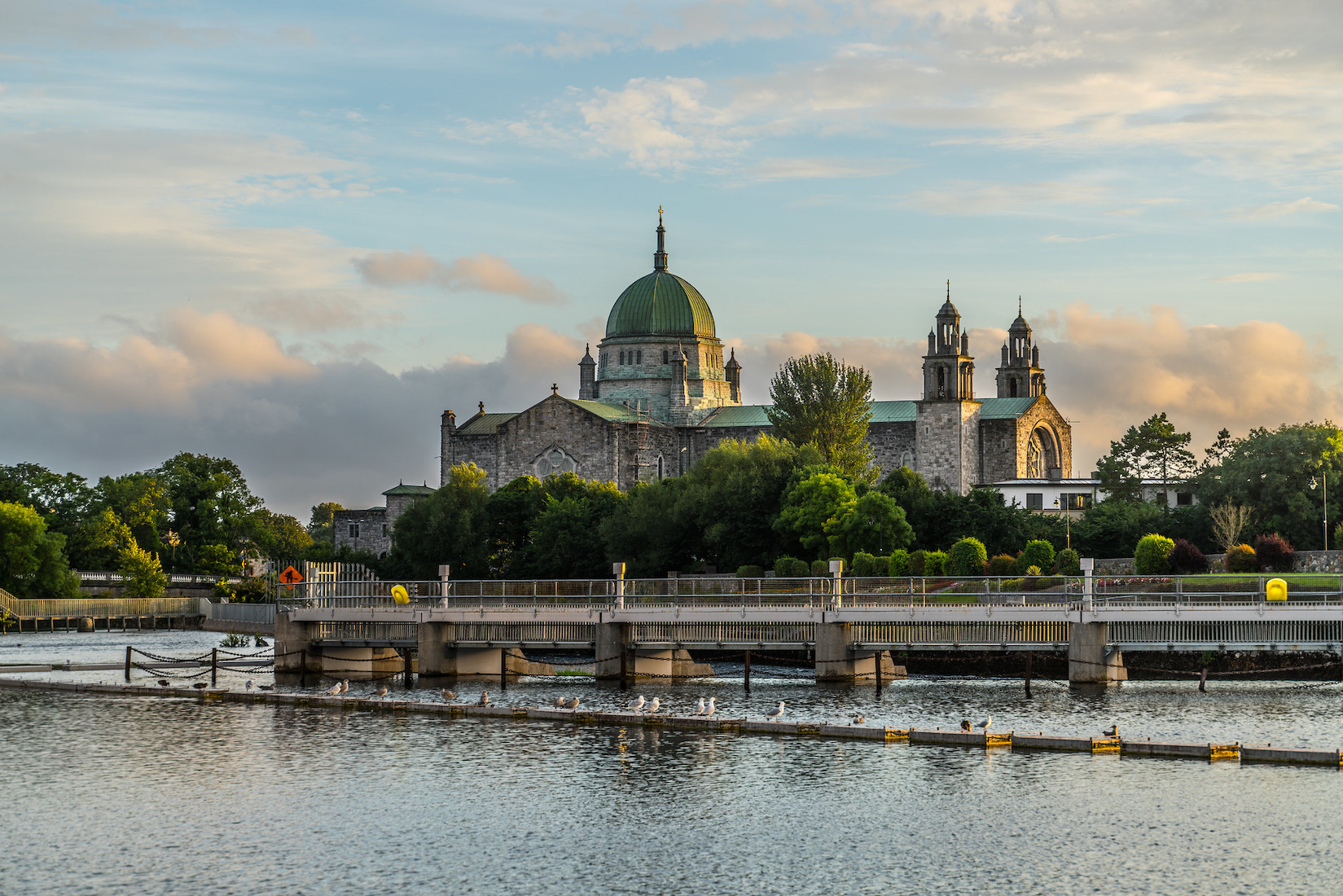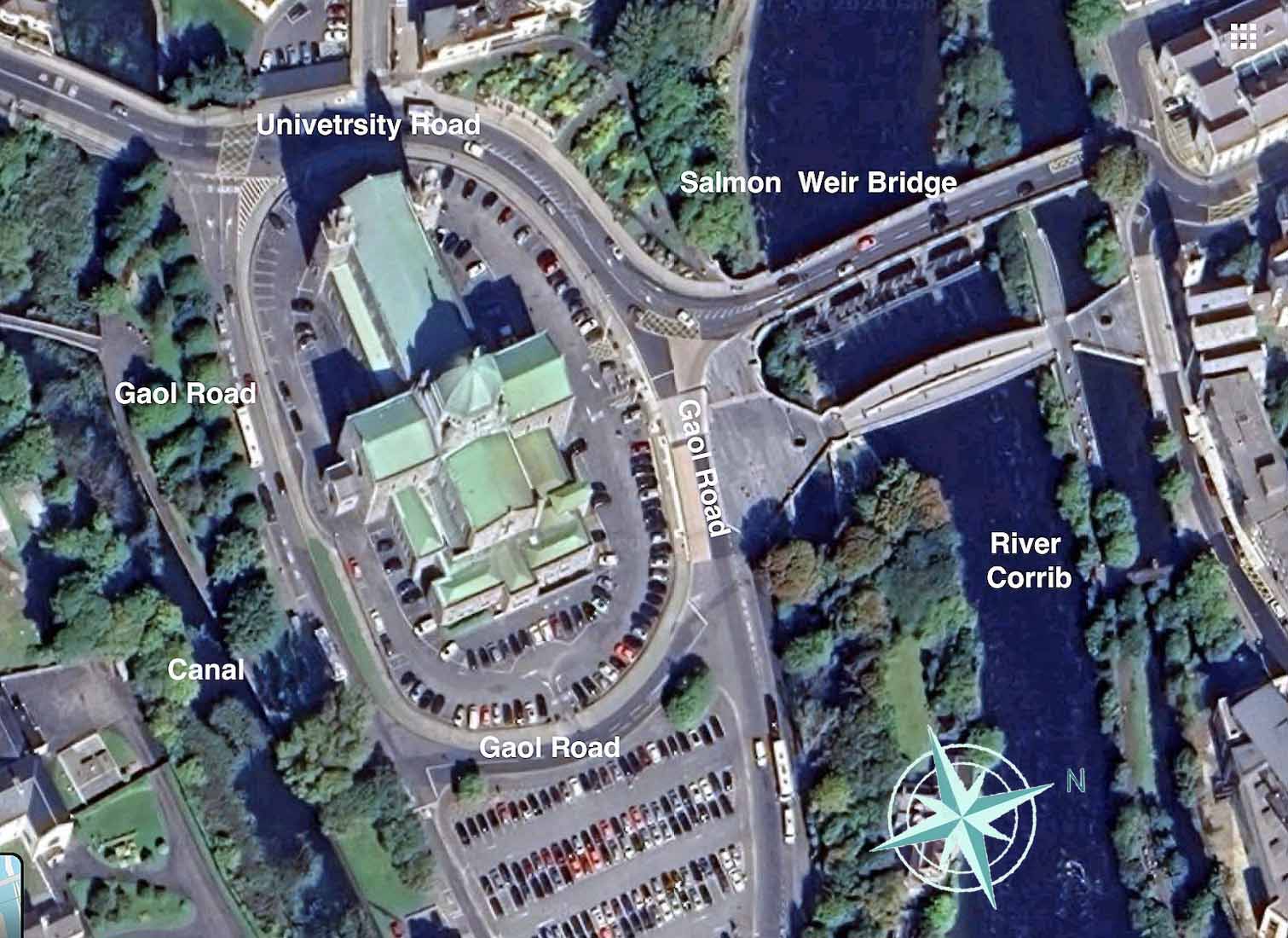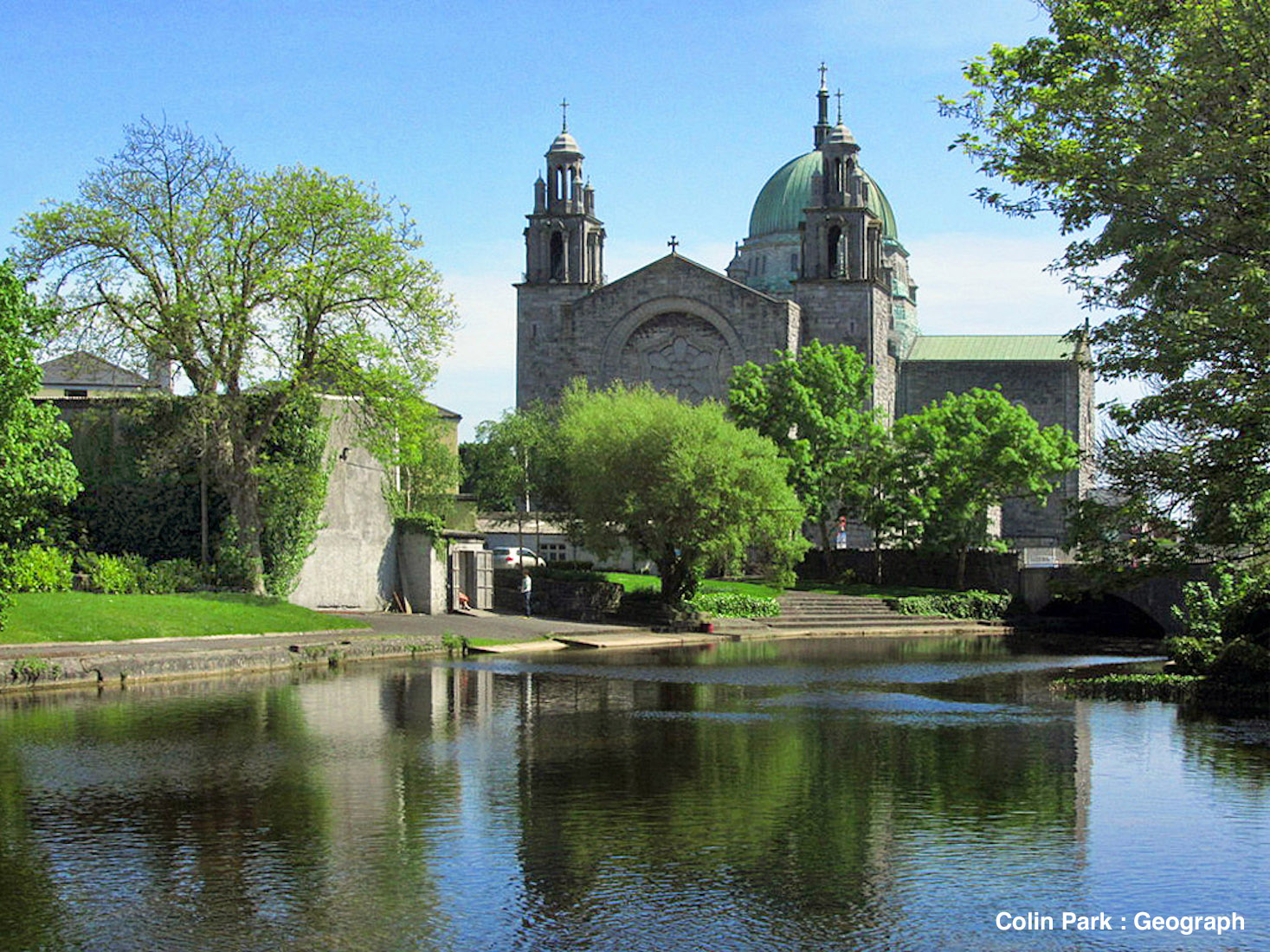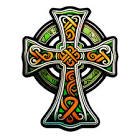
INDEX WM
Galway Catholic Cathedral is a fascinating building. It is a modern construction, dedicated in 1965, but built to look ‘old’. It is built on a site which is almost completely surrounded by water, which was the location of the old stone Galway Gaol. The Cathedral is built of stones largely taken from the gaol: there must be a Christian message here!
The main photographic contributor to this site is ‘Le Monde1’ [LM], who has willingly supplied his excellent photographs. Many of the window photographs were taken by ‘mmlander’ [ML]; see the Conclusion for more about these. Smaller numbers of photos have come from the Cathedral [GC]. There are also several accredited photos under the Creative License scheme, CCL, acknowledged in the text. Some photos are attributed to PRS – my initials. I have no particular wish to take credit for these, but they are largely screen shots from videos, or which have been cropped and edited to fit with the presentation. Further details about our contributors are given in the Conclusion.
A satellite view, plan and brief history of this Cathedral are given below. However, for navigation at any time, you can use the links given immediately below.

SATELLITE VIEW
The Cathedral lies northwest of the town of Galway, so the natural approach is across the Salmon Weir Bridge, crossing the River Corrib. Or for walkers, the generous pedestrian bridge just south of the road bridge. The satellite view shows some of the watery surrounds of the Cathedral, and how it is surrounded by the old Gaol Road.
In this site we shall be using our usual liturgical directions, as indicated here by the aqua compass points shown at bottom right. Thus we choose liturgical East (with a capital E) to indicate the expected direction of the Cathedral sanctuary. Other liturgical directions with capital initial letters are named accordingly. This is going to be confusing for the locals for two reasons. The Cathedral is oddly placed in terms of this naming, obviously because of the placing of the original gaol. The other problem is that the high altar of this Cathedral is under the central dome! Nevertheless, it will be better that we persist with the liturgical terminology. It is much easier to talk about the West wall (upper left), than the ‘approximately nor’-nor’-west wall’!
In our exploration of the outside of the Cathedral and its surrounds, we shall begin at the Salmon Weir Bridge, and make our way around the Cathedral in a clockwise direction, occasionally moving away for a more distant view.

PLAN
Let us look at the plan of the Cathedral. At the East (right) end a corridor separates the main body of the Cathedral from a set of offices, including the sacristy. The Cathedral has a crypt which we do not explore: access to the crypt is off this corridor. West of the corridor, the Cathedral has a fairly standard cruciform shape with nave, crossing and retrochoir running from West to East, and a transept North and South of the crossing. There are covered aisles running along the North and South sides of the nave and the retrochoir, and four chapels in the corners determined by the transepts.
The square crossing is unusually large with the dome above, and the (high) altar, cathedra, ambo etc in this area. The Cathedral bookshop occupies the Chapel marked H. At the Western end are two towers. The South tower room is the location of the baptistery, and there is a shrine to Joseph occupying part of the North tower room.
The main visitor entry is via the North transept, which opens out to the Salmon Weir Bridge. There is also an exit via the South transept leading through a small Mothers’ Chapel.
In exploring this Cathedral, we shall begin at the West end, investigating in turn the nave (and chapels), the crossing, the transepts, and finally the retrochoir and chapels.
HISTORY
Wikipedia
Years Built: 1958 – 1965
Address: Galway Cathedral, Galway, Ireland.
The Cathedral of Our Lady Assumed into Heaven and St Nicholas, commonly known as Galway Cathedral, is a Roman Catholic cathedral in Galway, Ireland, and one of the largest and most impressive buildings in the city.
Construction began in 1958 on the site of the old city prison. It was completed in 1965, lending it the designation of being ‘the last great stone cathedral to be built in Europe’. It was dedicated, jointly, to Our Lady Assumed into Heaven and to St. Nicholas.
History
A parish chapel was built around 1750 on Middle Street at Lower Abbey-gate Street. In 1821 the chapel was replaced with a limestone church built in the Gothic style, and dedicated to St. Patrick. When the Diocese of Galway was established in 1831, St. Patrick’s became the pro-cathedral. After the Cathedral opened in 1965, St. Patrick’s was deconsecrated.
Opening of the Cathedral
The Galway Cathedral was opened on 15 August 1965. President Éamon de Valera lit the sanctuary candle and Cardinal Richard Cushing of Boston delivered a sermon ‘Why Build a Cathedral?’. Bishop Michael Browne, Bishop of Galway, was accompanied on the altar by four Archbishops.
Architecture
The architect of the Cathedral was John J. Robinson who had previously designed many churches in Dublin and around the country. The architecture of the cathedral draws on many influences. The dome and pillars reflect a Renaissance style. Other features, including the rose windows and mosaics, echo the broad tradition of Christian art. The Cathedral dome, at a height of 44.2 metres (145 ft), is a prominent landmark on the city skyline.
Constructed nearly entirely of local limestone, the Cathedral is considered to be the last stone public building in Ireland.
https://en.wikipedia.org/wiki/Cathedral_of_Our_Lady_Assumed_into_Heaven_and_St_Nicholas,_Galway



